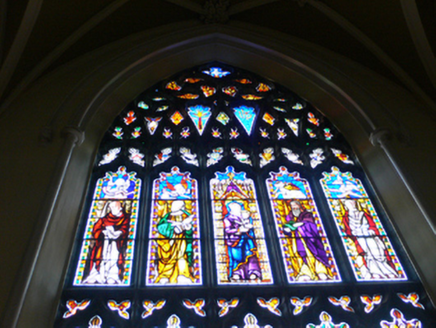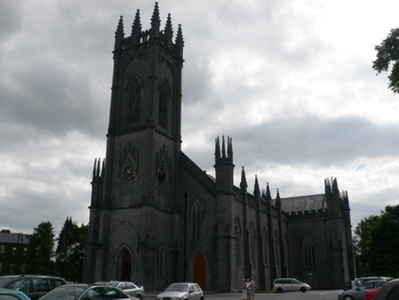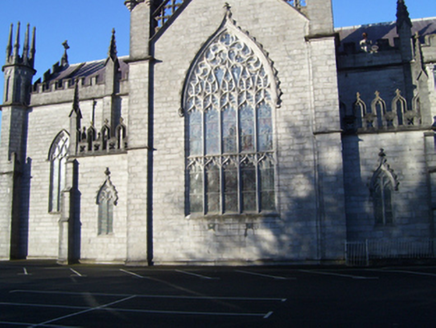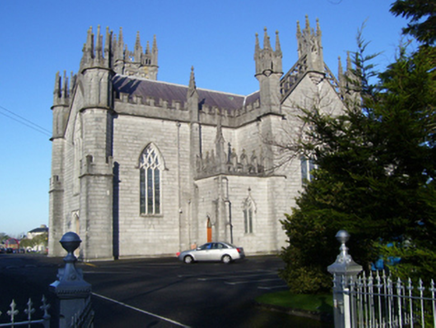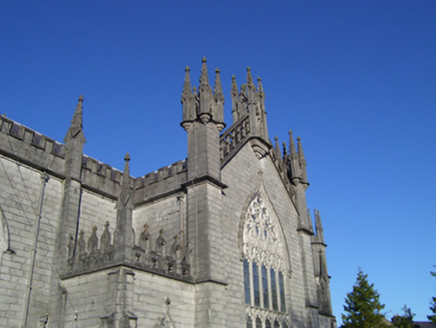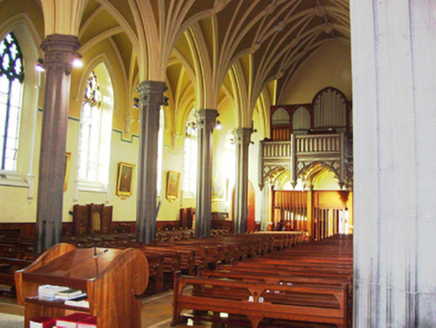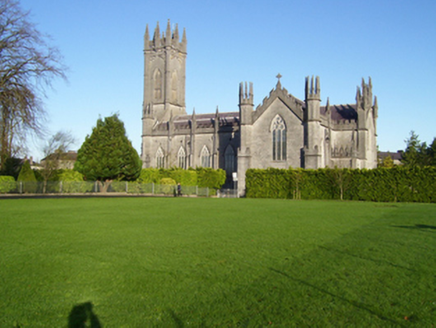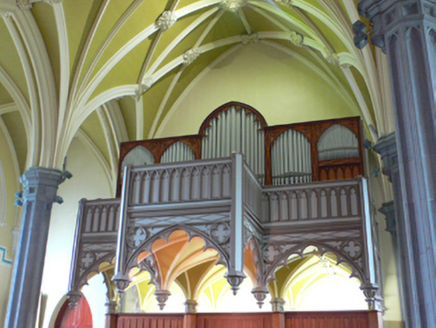Survey Data
Reg No
30331039
Rating
National
Categories of Special Interest
Architectural, Artistic, Social
Previous Name
Saint Mary's Catholic Cathedral
Original Use
Cathedral
In Use As
Cathedral
Date
1825 - 1835
Coordinates
143830, 251965
Date Recorded
25/10/2009
Date Updated
--/--/--
Description
Freestanding cruciform-plan gable-fronted Roman Catholic Cathedral of the Assumption, built 1827-31, and designed in fourteenth-century Gothic style, with three-stage tower at north-west end. Five-bay nave, with bay flanking tower, and having rectangular chancel at east end flanked by minor chapels. Pitched slate roofs to main body, roof of tower not visible. Main roofs have parapers with base moulding and crenellations. Cast-iron rainwater goods. Ashlar limestone walls having base moulding, with square-plan three-stage clasping buttresses to corners of building, those to west front and transepts being recessed and octagonal above bottom stage, with arcade detail to top stage, and topped by crocketed pinnacles. Buttresses to east end topped with open work having having cusped heads to openings set in gablets topped with sculpted finials and flanked by clasping buttresses having crocketed pinnacles, that to apex also having quatrefoil detail and elaborate moulded corbel support. Stages of tower defined by string courses. Octagonal clasping buttresses to tower topped by crocketed pinnacles, latter linked by openwork screens with cusped pointed arch openings, pinnacles to middle supported on moulded corbels. Copings to east end gable are openwork screens with quatrefoil details set in squares. Parapets to blocks flanking chancel have parapets comprising crenellations having cusped pointed arch openings with cross finials and having quatrefoil details to base. Bays of building divided by more slender buttresses topped by single crocketed finials. Pointed windows throughout with chamfered surrounds, hood-mouldings, and stained glass. Triple-light windows to nave and transepts, and five-light to east window. East window has elaborate tracery and sculpted hood-moulding with finial. Small two-light windows to chapels with cusped heads and with tracery above, with sculpted hood-moulding having finial. Tower has Tudor arch recesses to top stage with cusped detailing, quatrefoils to spandrels and pointed arch openings with Y-tracery and sculpted heads to mullioned openings with timber louvers, and hood-mouldings. Middle stage has clock faces in oculus-like settings in pointed frames having four-light windows below with cusped pointed arch heads, and elaborate hood-mouldings with crocketed pinnacles and human head stops. Doorways to gable-front have moulded surrounds, hood-mouldings and carved timber double-leaf doors with limestone thresholds. Doorways to transepts have Tudor arches with moudled surrounds and label-mouldings, timber battened double-leaf doors and overdoors and flanked by stoups. Interior has elaborate detailing comprising slender octagonal columns with pointed arch detail to facets, moulded capitals and elaborate ribbed vaulting having human head and vegetal bosses. Organ gallery fronted by baldachino having Gothic detailing. Altar area has carved timber screen and modern altar. Stained-glass windows throughout nave, being particularly elaborate to east window. Stations of the Cross are paintings.
Appraisal
This Cathedral is one of the finest church buildings in the country with the design carried through from start to finish by the same architect, Dominick Madden. Externally the plan is emphasised by a rich elaboration of Gothic detail, especially so in great east window, but also in the crenellations of the side chapels, the gable copings of the east gable, and the multiple pinnacles on octagonal turrets flanking the transept gables. The interior is made spacious by the use of slender octagonal limestone columns which support a complex rib system of vaulting with decorative bosses and masks at the junction of the ribs. The quality of the stone carving, the consistency of design and boldness of detail makes this cathedral outstanding. Its interior displays excellent work in its clustered columns and detailed vaulted ceilings and is enhanced by good-quailty stained-glass windows. Altogether it is one of the finest of the early nineteenth-century Catholic cathedrals celebrating the revival of this religion as a power in the land.
